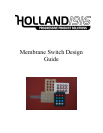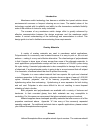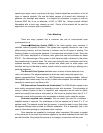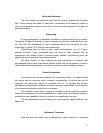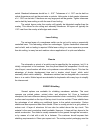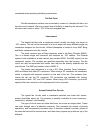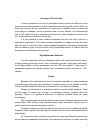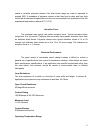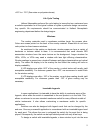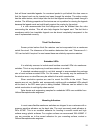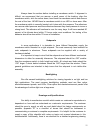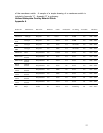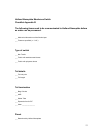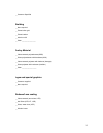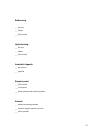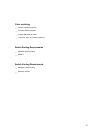6
considered when specifying shielding requirements.
Tail Exit Point
Flexible membrane switches are connected by means of a flexible tail that is cut
from the circuit material. We have a great deal of flexibility in selecting the exit point. The
tail cannot exit under or within .125" of the active keypad area.
Interconnect
The flexible tail that exits a membrane switch usually has single row traces on
.100" centers. This tail can be connected to a circuit board with many different single row
connectors designed for flex circuits. Holland Nameplate is tooled to crimp AMP, Berg,
and Molex connectors onto flex circuits.
The most common type of Berg connector used is the Berg Clincher (65801).
This is a female single row connector with contacts on .100" centers. The Clincher
system is also available in a male version, part number 66226. The AMP system is a two
component system. The contacts are specified separately from the housing. The flex
circuit can also be terminated with solder tabs that can be directly soldered onto the
circuit board. The AMP part number used is 88997-2.
The lowest cost alternative is to use a ZIF (Zero Insertion Force) connector.
AMP and Molex both offer ZIF connectors. When using a ZIF connector the membrane
switch is shipped with exposed contacts on the end of the tail. The customer then
inserts the tail into the ZIF connector. ZIF connectors are available with locking
mechanisms in both .100" and .050" centers. When using a ZIF connector, you should
specify either the connector or the requirements for the connector.
Screen Printed Flex Circuits
The typical flex circuits used in membrane switches are made with screen
printed silver-filled epoxy ink. The process is carefully controlled to insure maximum
conductivity, adhesion, and flexibility.
This type of circuit does not utilize feed thrus, so circuits are single sided. Traces
can cross through use of a dielectric crossover. This increases the number of printing
operations, and consequently increases cost. A dielectric material is screen printed in
the area the trace will be crossed over, and then silver jumpers are printed on top of the
dielectric.



